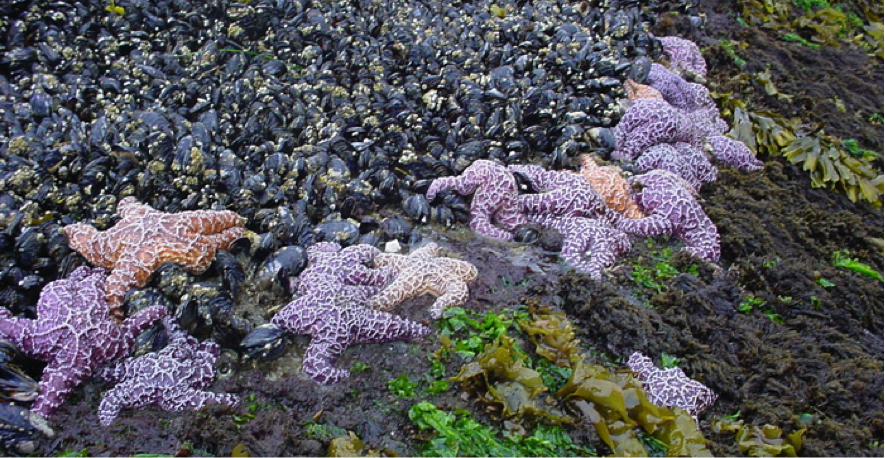Put simply, Sea Star Wasting Syndrome is a virus that creates lesions (cuts) on a sea star’s skin. These lesions grow larger and become infected until the sea star literally disintegrates. While the disease is known to affect many different species of sea stars, it was first discovered in the Pacific Northwest among individuals from the genus Pisaster. The disease works and spreads quickly, which is why sea star populations have been decimated in only a matter of years. The disease seems to have a heightened affect in warmer waters, which means that as temperatures climb in the Pacific due to El Niño events or climate change, it is unknown how, or if, populations will recover.

So, who cares about sea stars anyway? Well, sea stars are what is known as a “keystone species.” They are a predator at the top of the food chain that significantly influences the health and size of populations lower on the chain. Sea stars prey on small invertebrates, namely mussels, and keep their population size in balance. Without sea stars eating them, mussel populations rapidly grow out of control, and outcompete other species for space, food, and other resources. This leads to a decrease in the biodiversity of these habitats and has negative impacts on the overall health of the ecosystem. Therefore, sea stars are essential to maintaining the health of our ocean.

With all the bad news surrounding these animals, I’ll leave you on a good note – juvenile sea stars seem to be returning in spots! They have been spotted in greater numbers up and down the coast in the last year. While it is still unknown whether these populations will fully recover, there is hope that we will soon start seeing them more often in tide pools. If you see a sea star, whether here at Cabrillo or elsewhere, please help us protect the animals by leaving them be. Report any sightings of any species to a volunteer, ranger, or another on http://www.seastarwasting.org so we can continue to monitor these animals. Citizen science matters!
To learn more, check out these websites:
http://www.eeb.ucsc.edu/pacificrockyintertidal/data-products/sea-star-wasting/
http://www.asnailsodyssey.com/LEARNABOUT/SEASTAR/seasKeys.php
